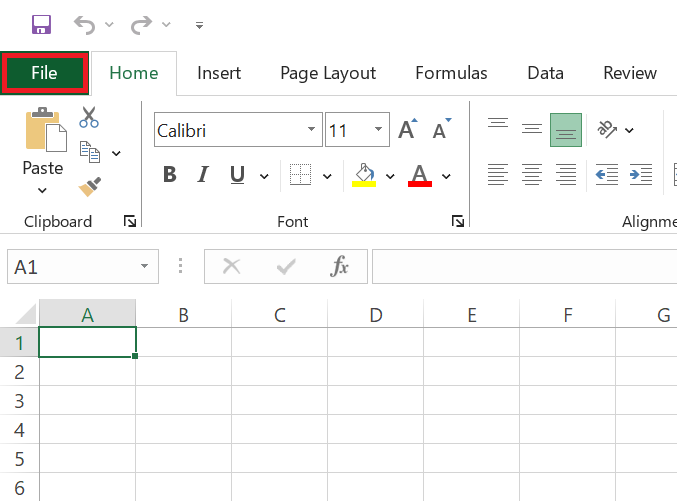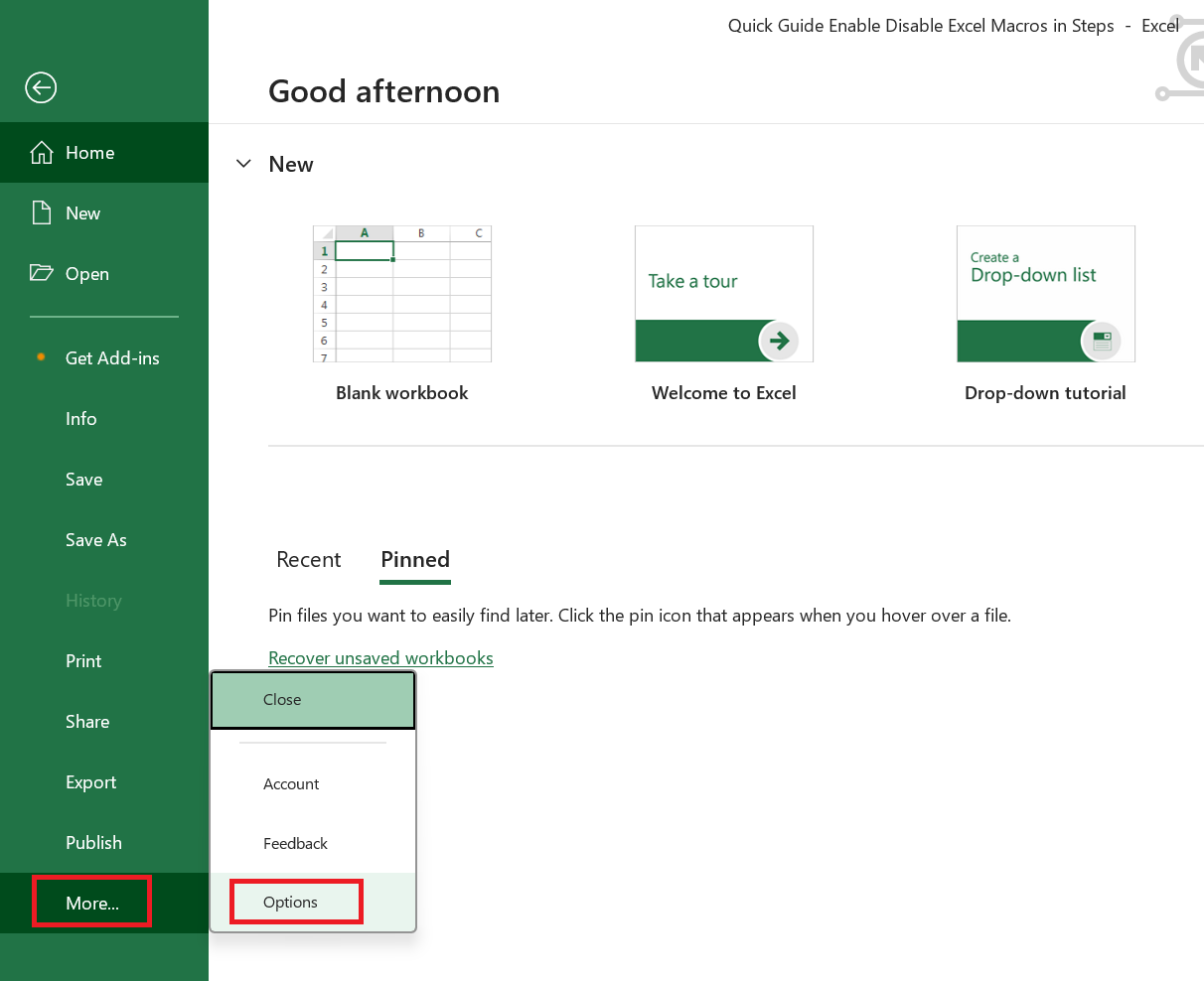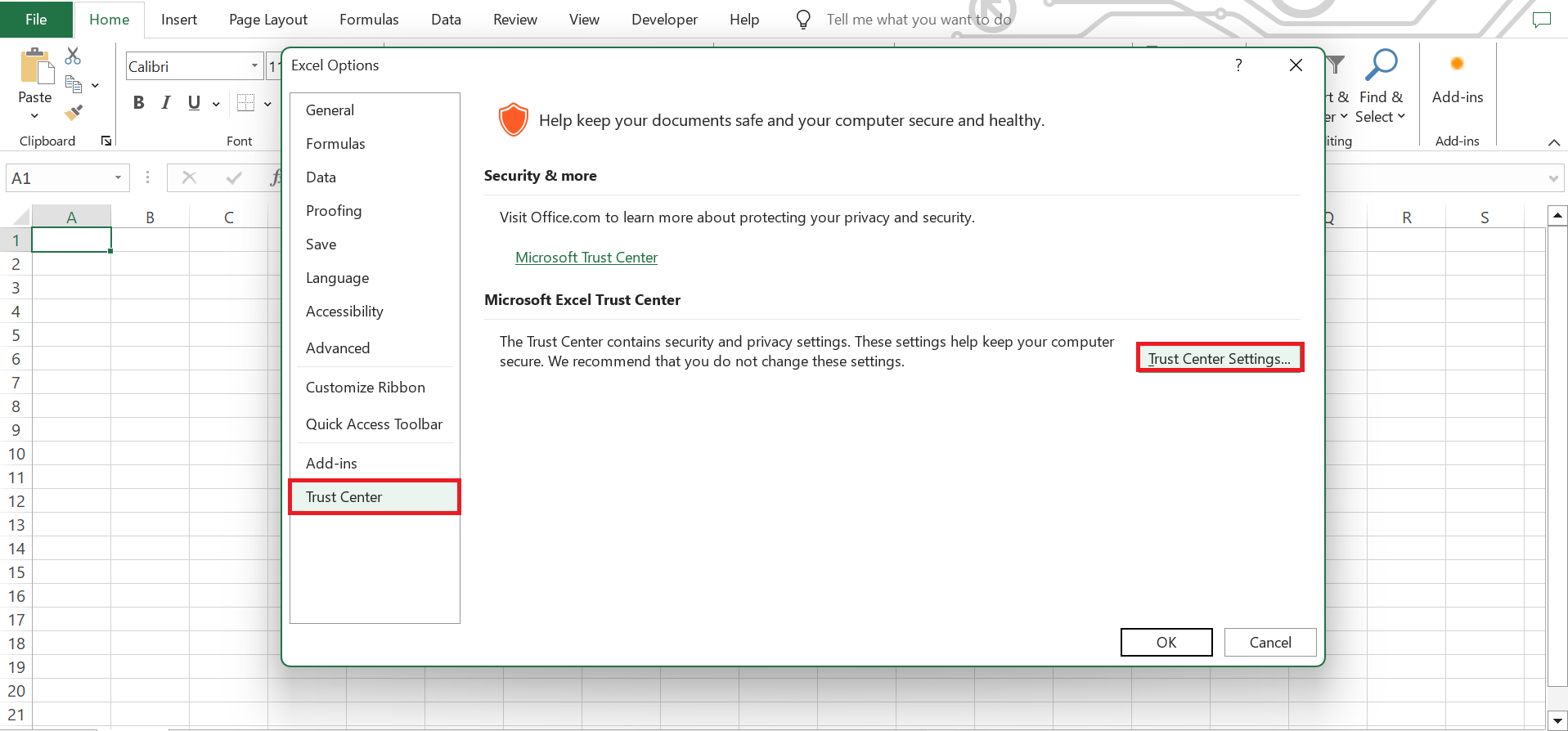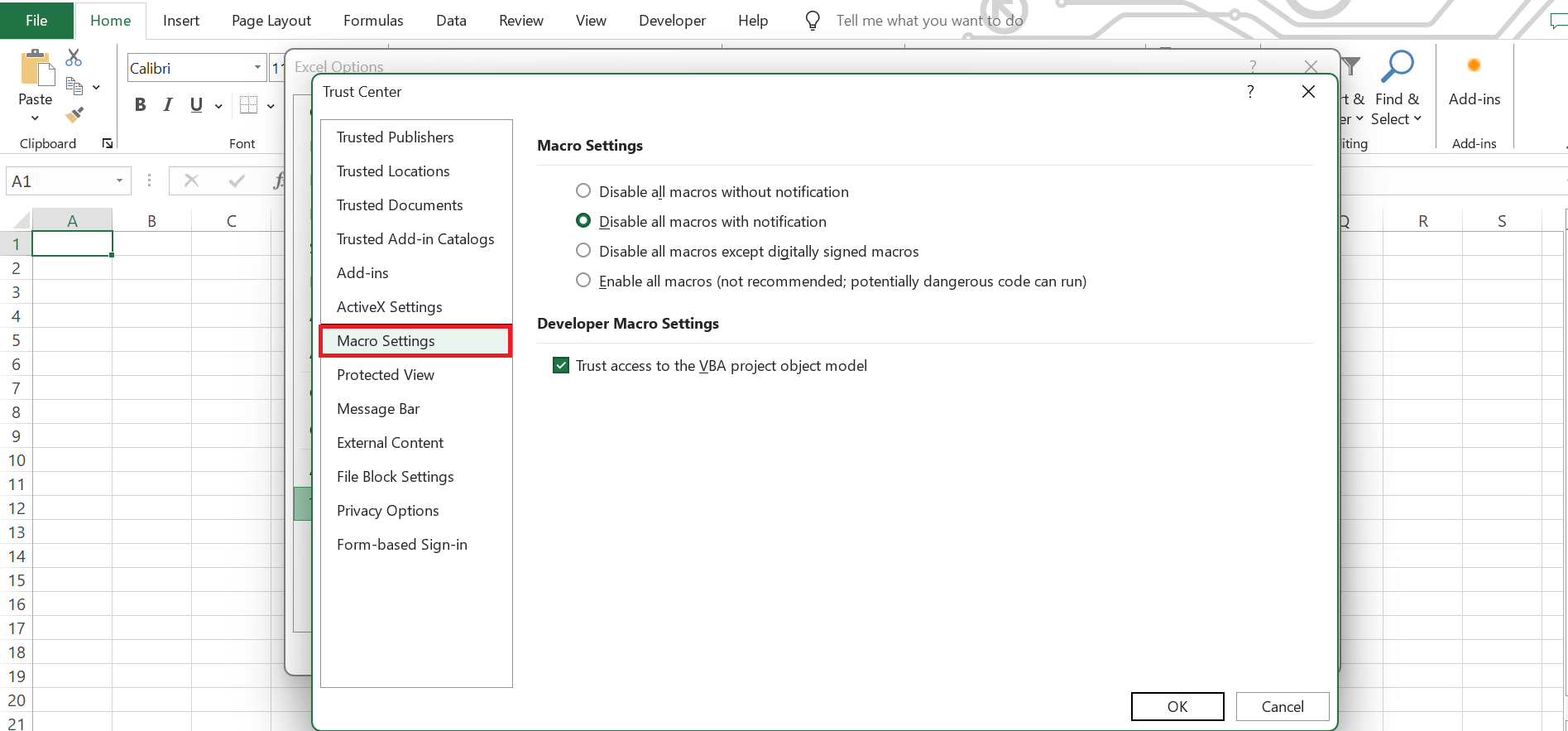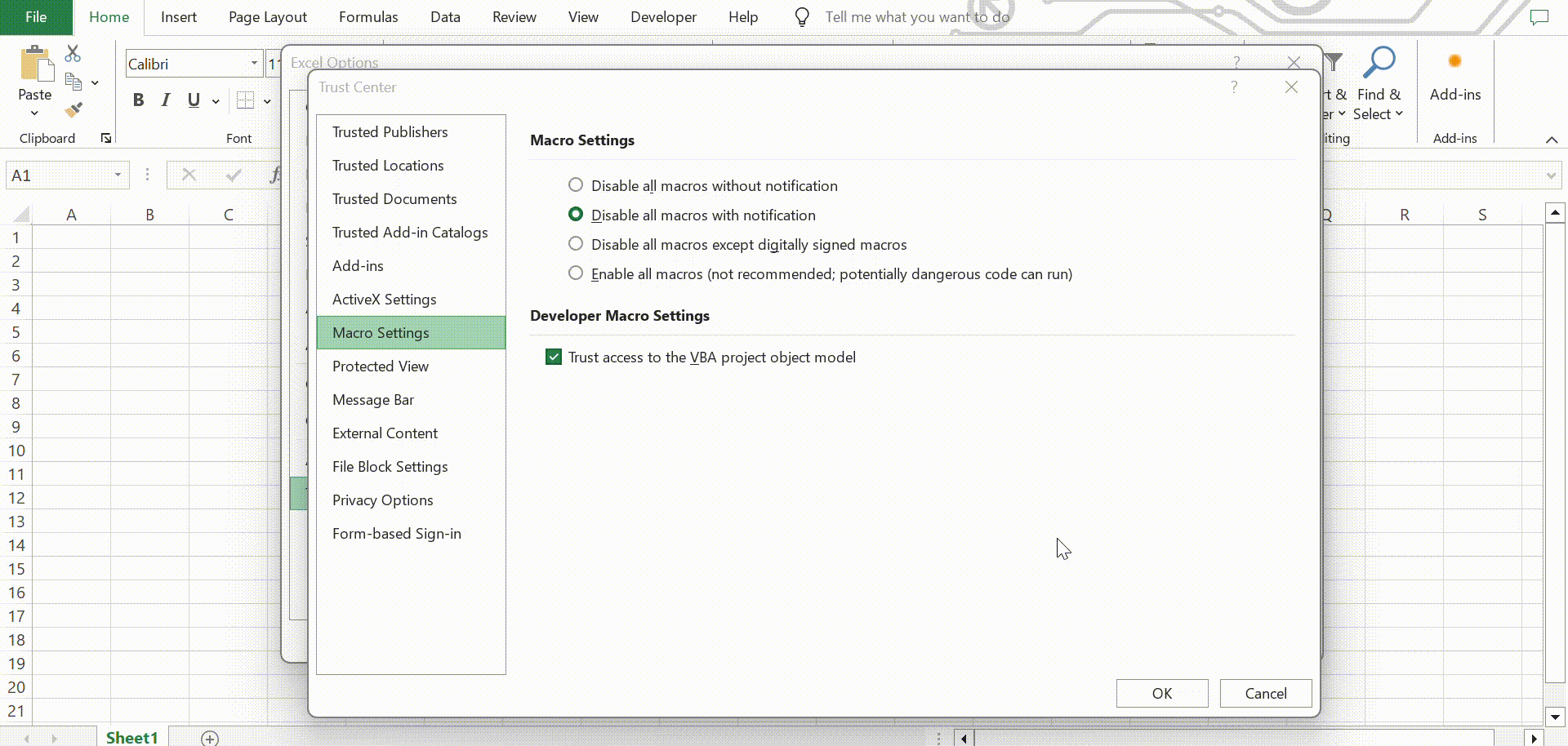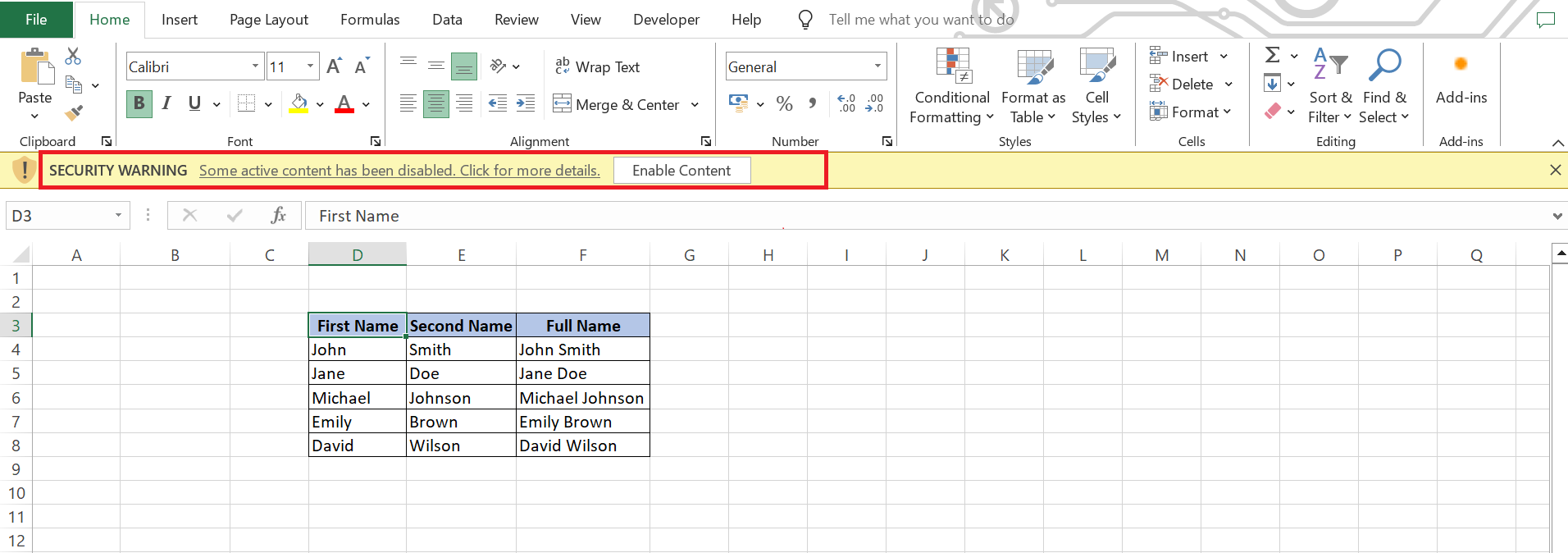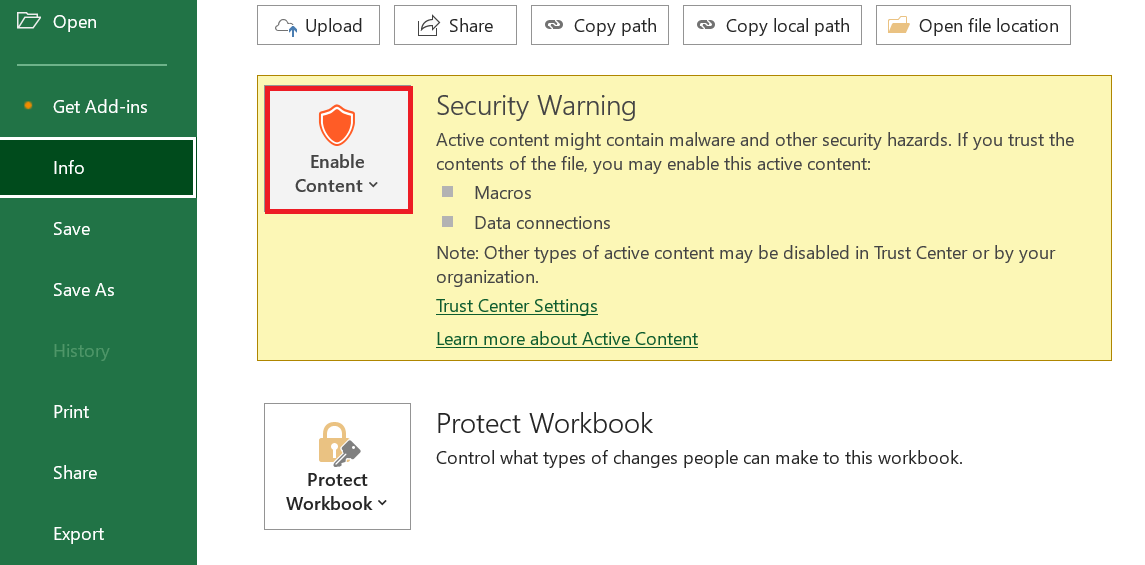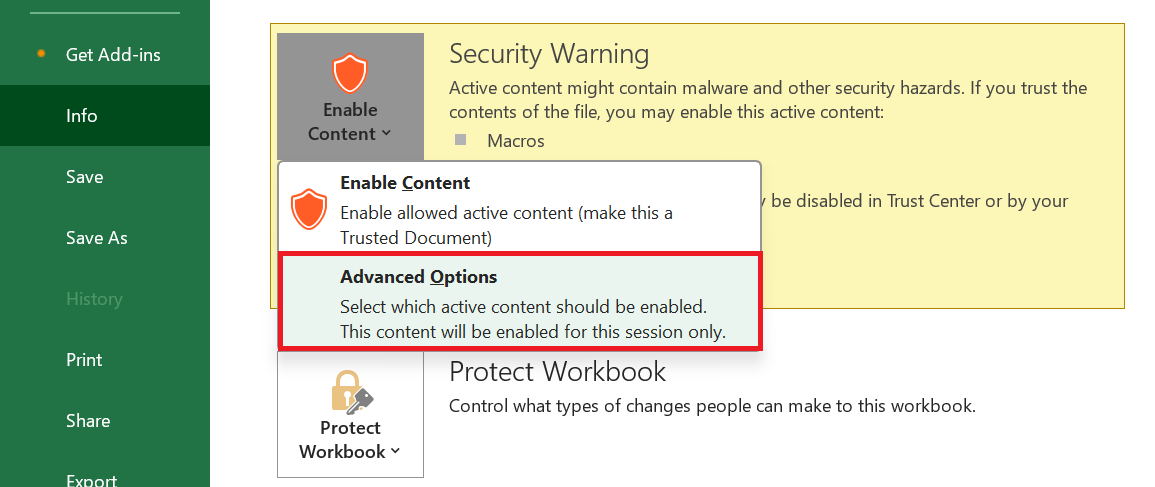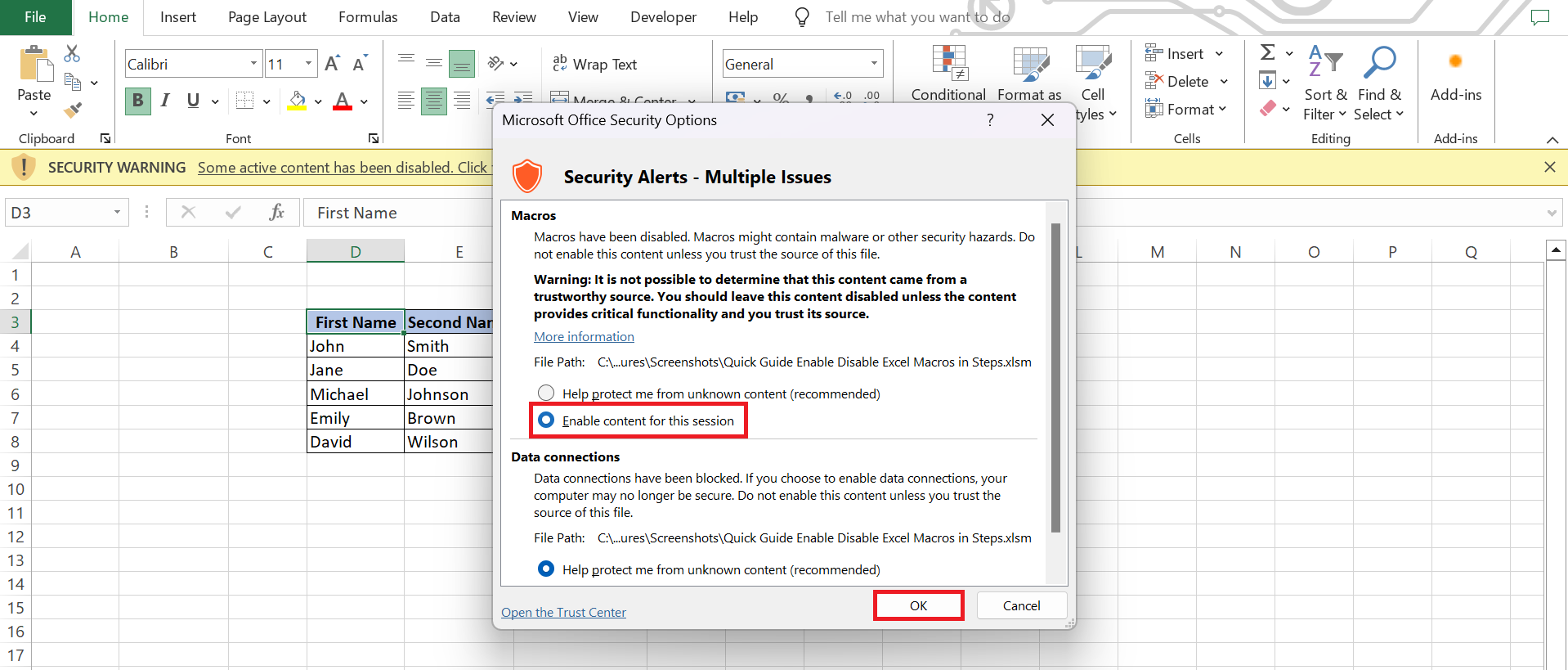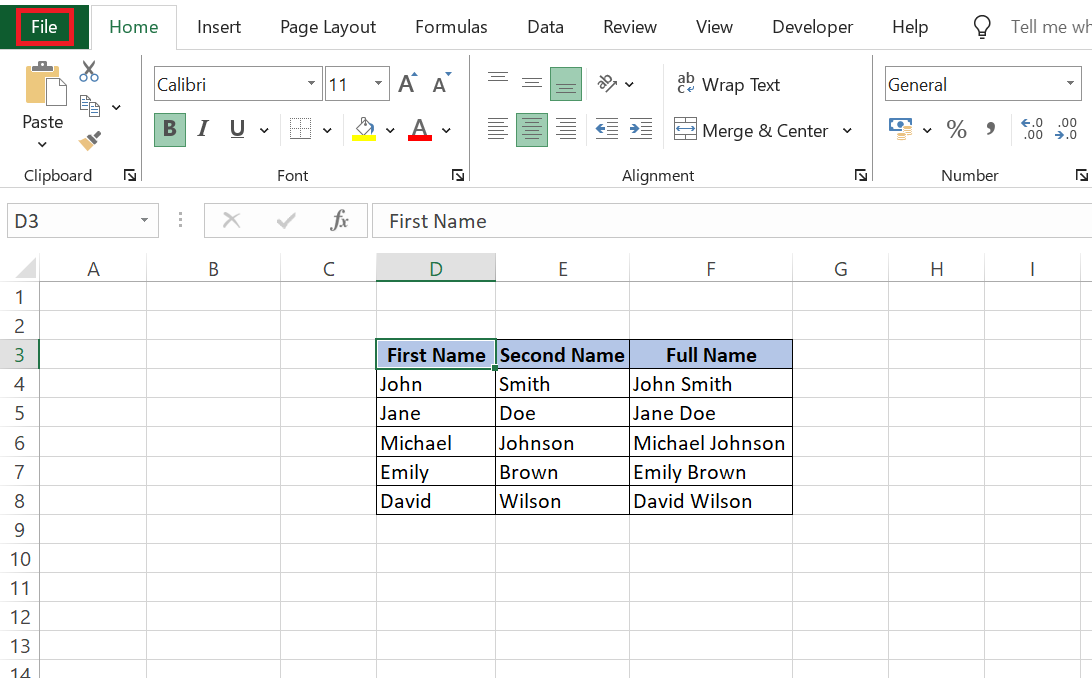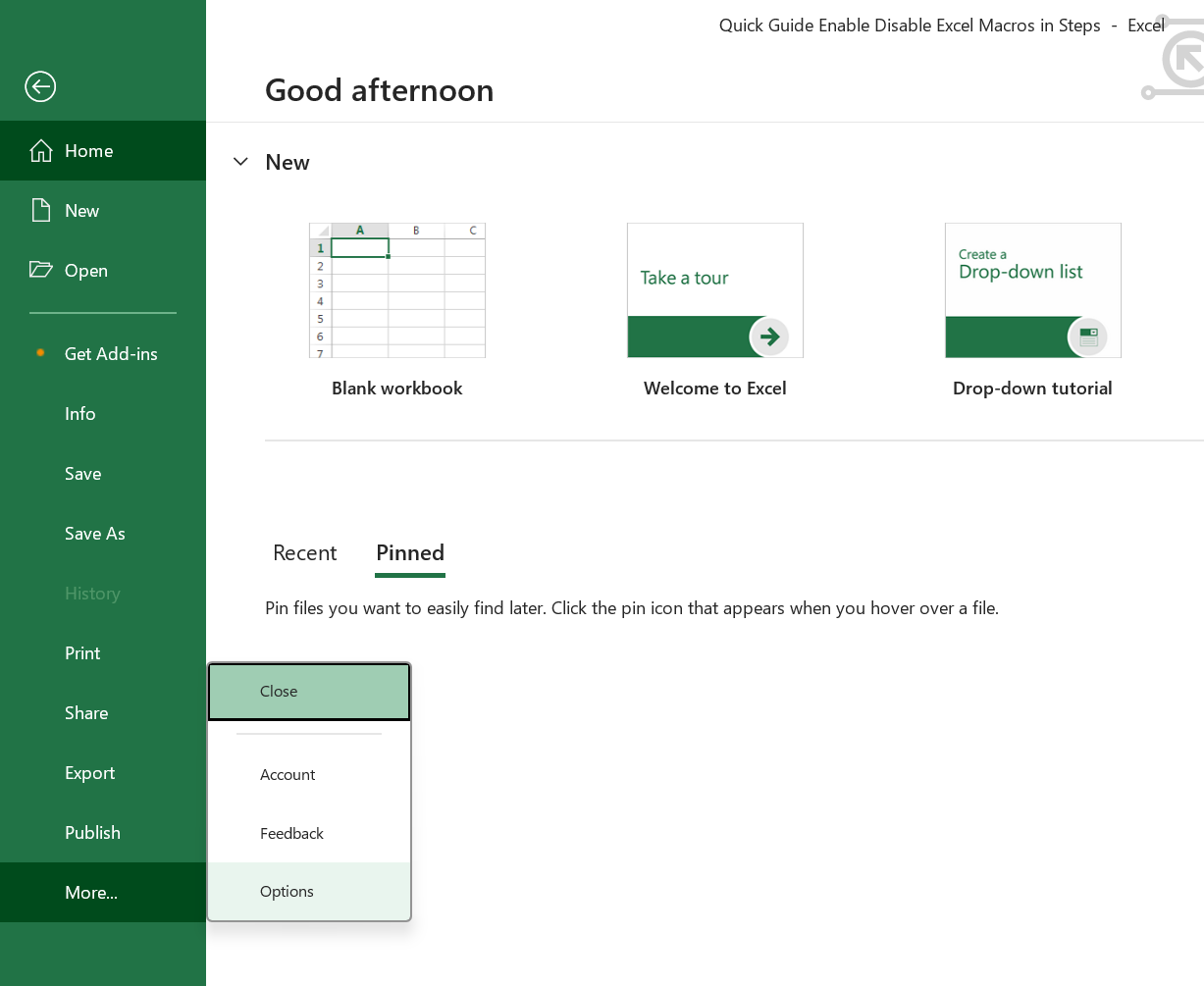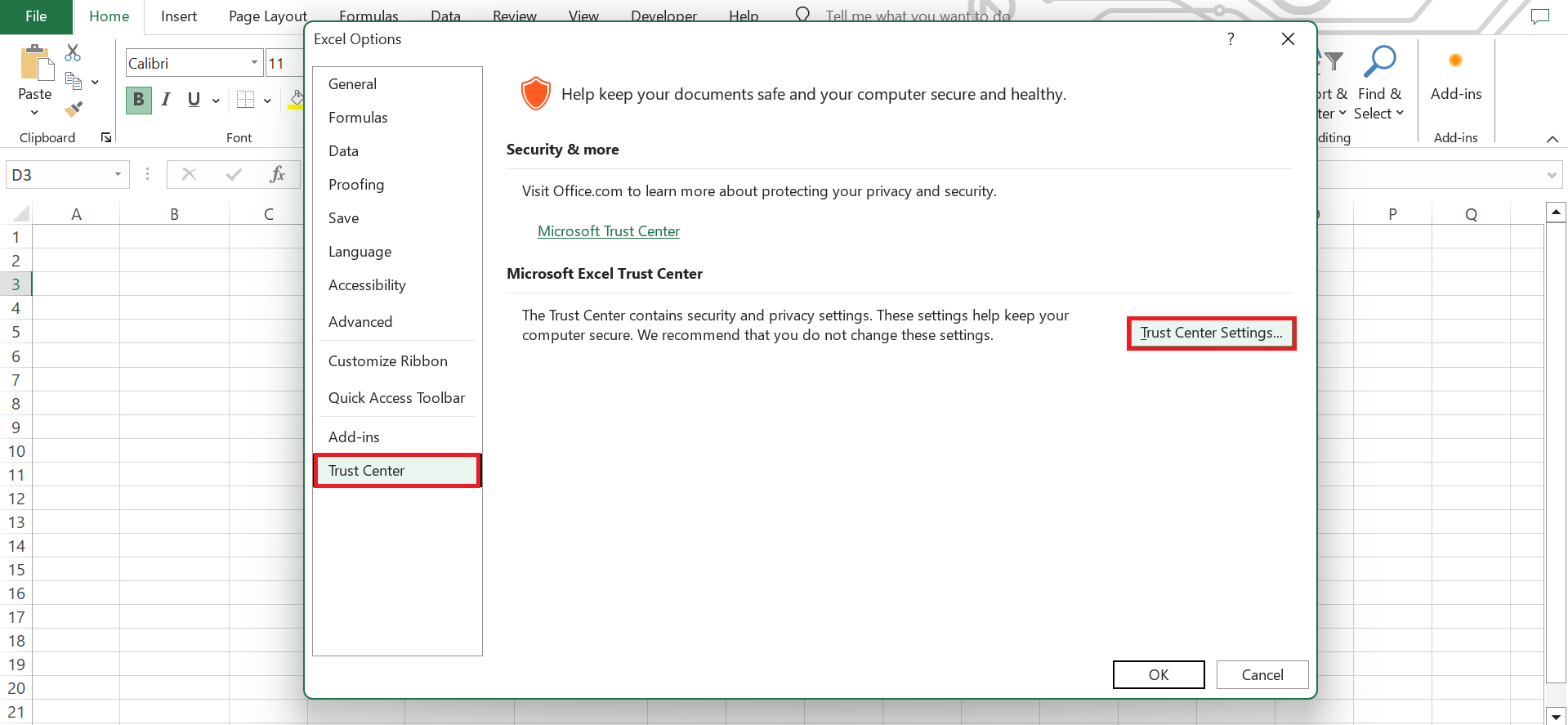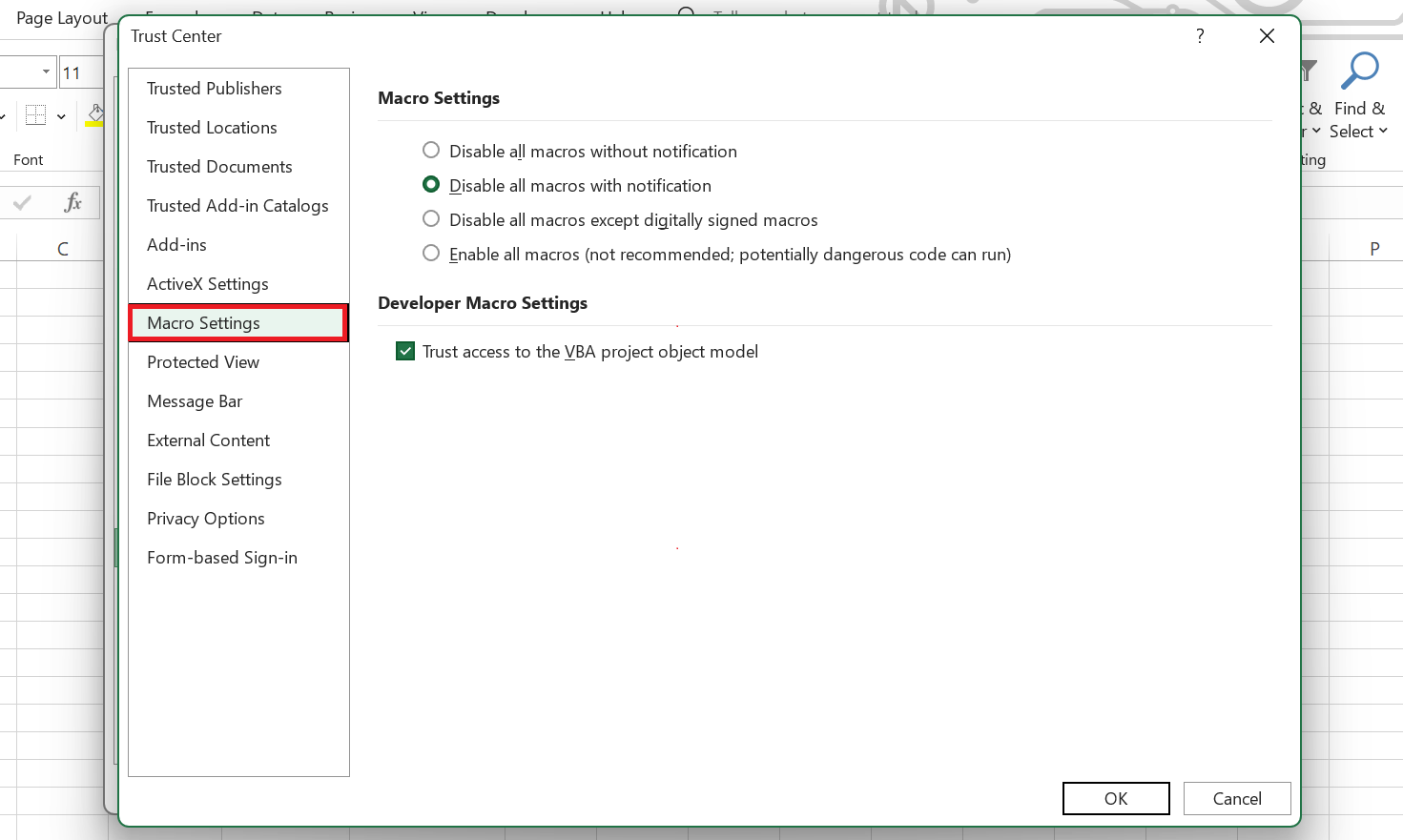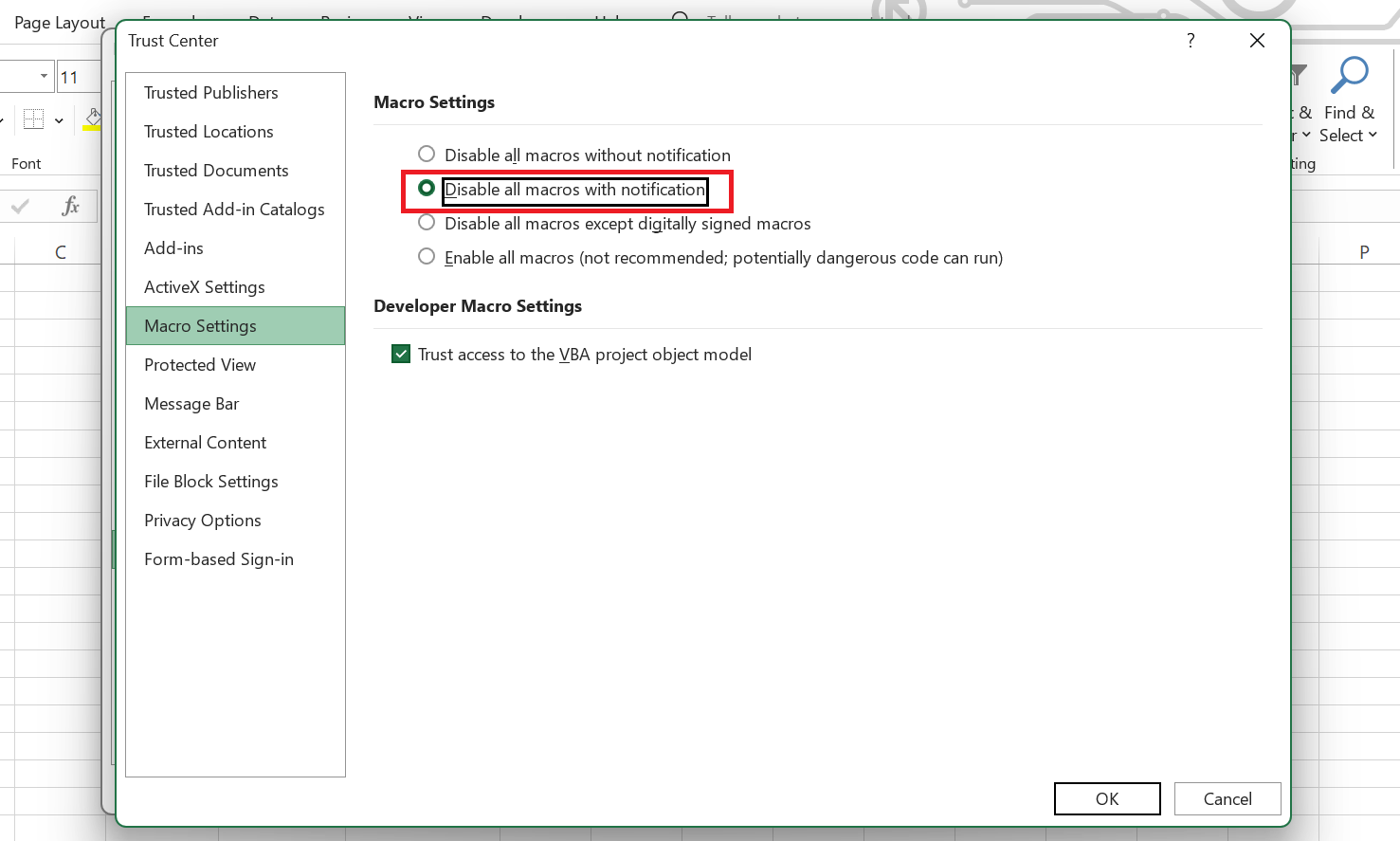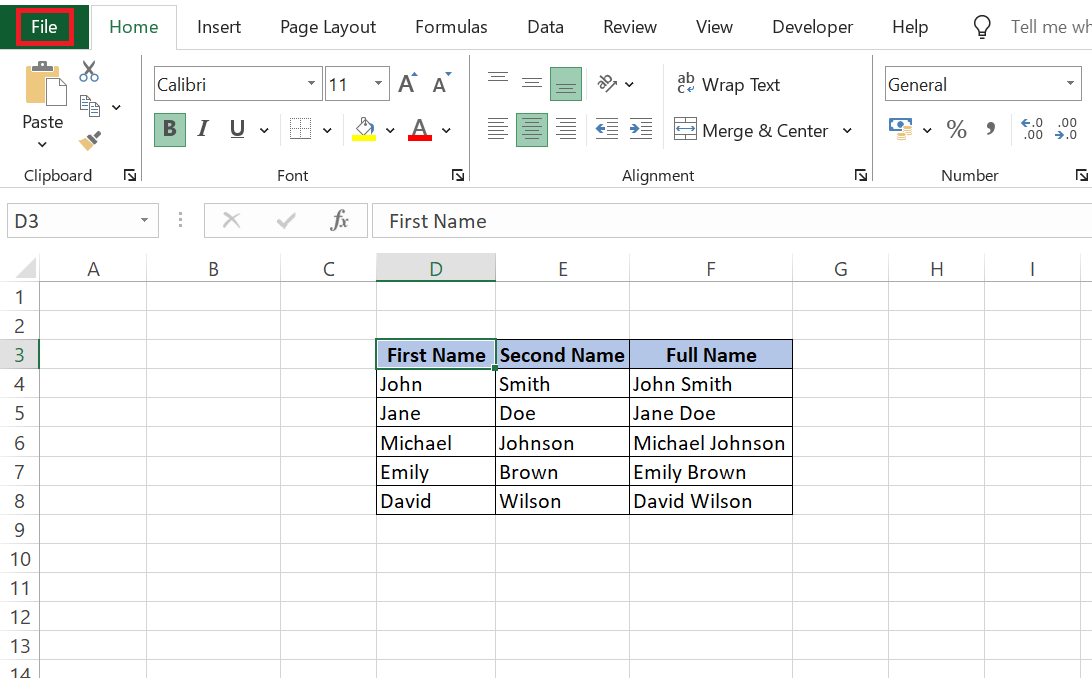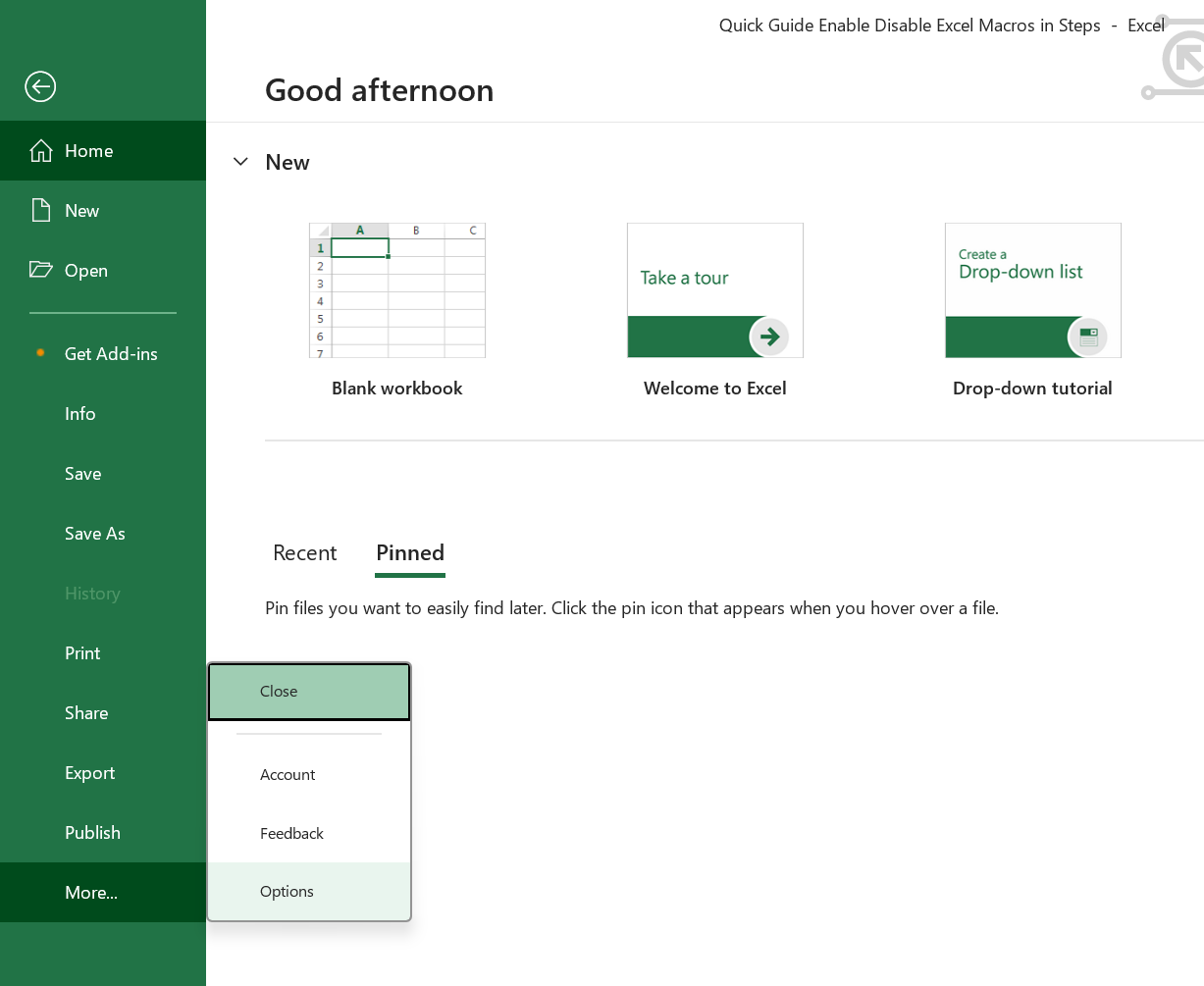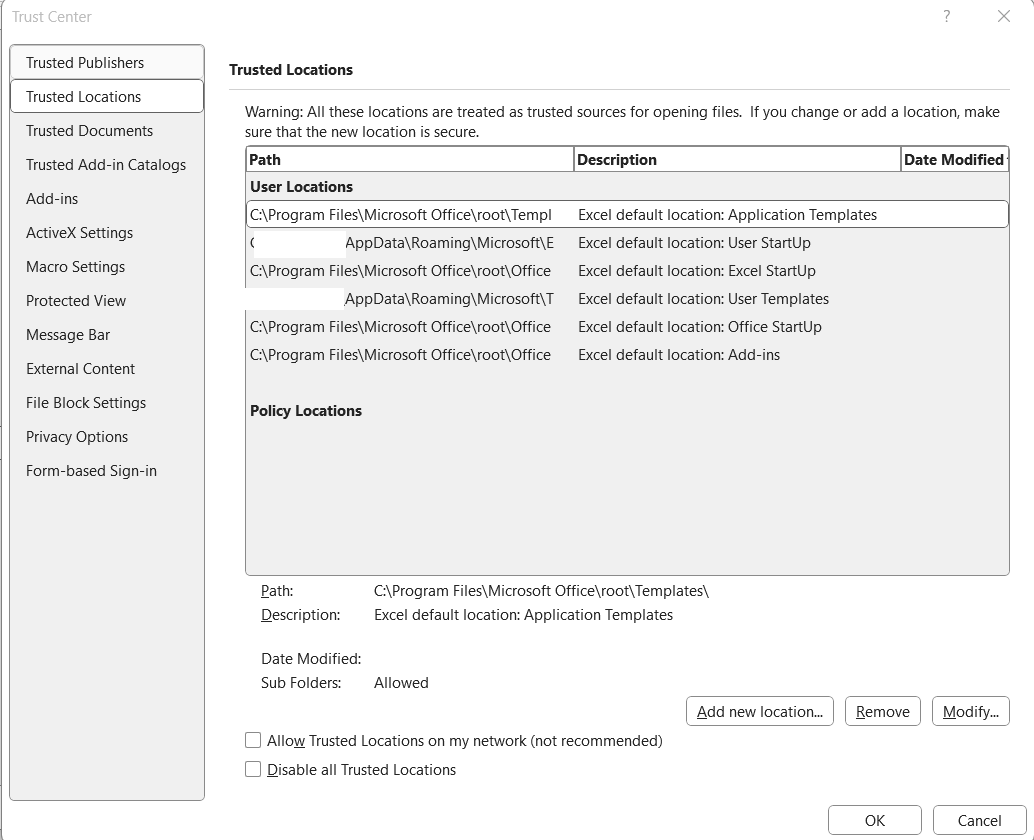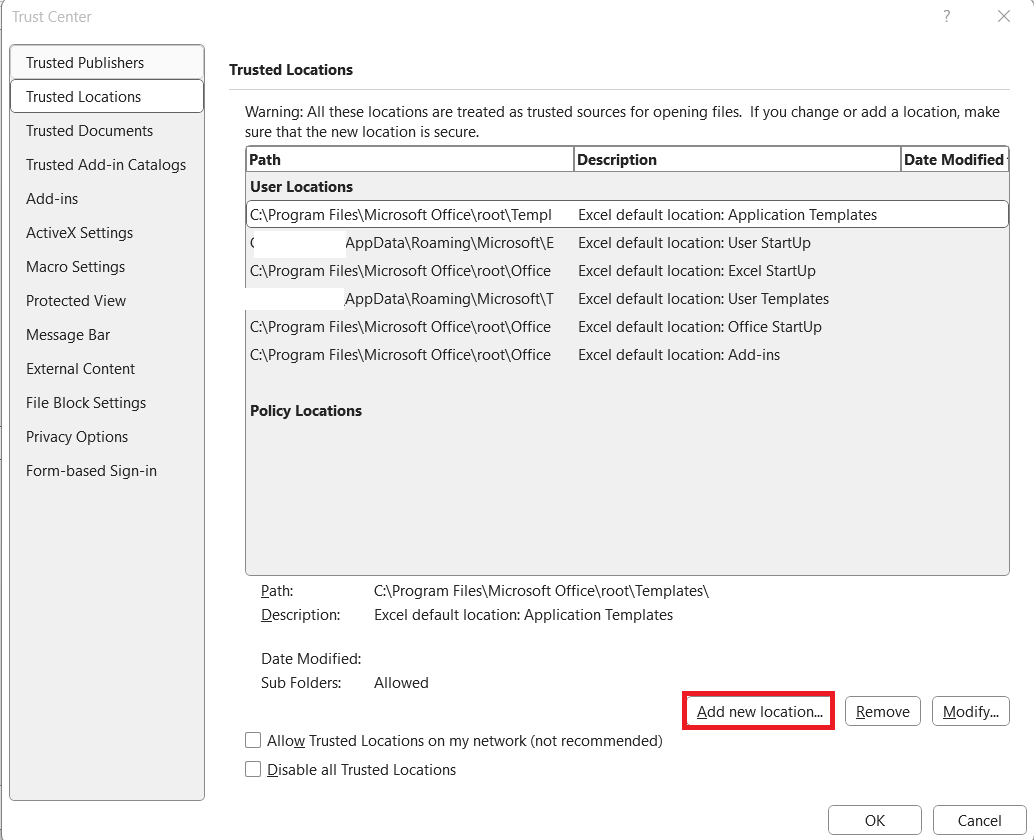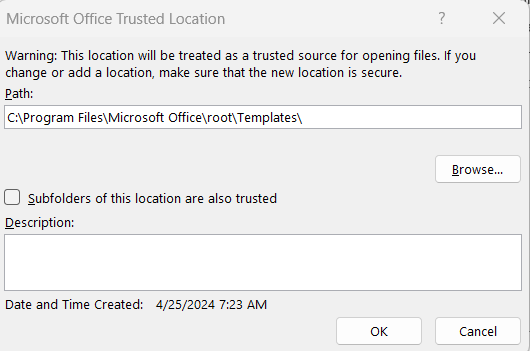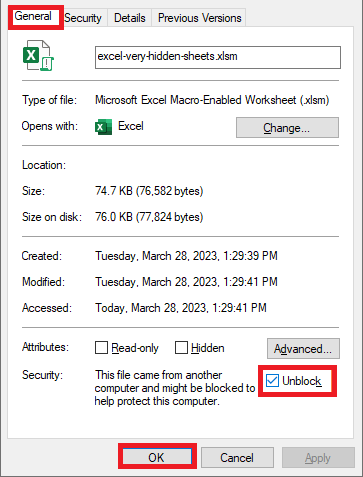Welcome to the realm of Microsoft Excel Macros, where mundane tasks transform into magical feats of automation. Macros are your coding concierge in Excel, streamlining laborious tasks with a simple click. Say goodbye to repetitive data entry and formatting woes – macros are here to revolutionize your spreadsheet experience. In this article, we will explore how to enable disable macros in Excel.
Key Takeaways:
- Macros skyrocket productivity by automating repetitive tasks, turning hours of work into mere minutes.
- Beware of malicious macros, which pose a real threat to your data and system security.
- Excel initially disables macros, ensuring you run only those from trusted sources.
- When enabling macros, strike a balance between convenience and caution by adjusting security settings wisely.
- Establish safe macro habits, such as creating and vetting your own macros, staying informed about potential risks, and utilizing trusted locations for frequently used macros.
Table of Contents
Introduction to Excel Macros
Understanding the Role of Macros in Excel
Welcome to the world of Excel Macros—an indispensable feature that turns the tide from monotonous to magical in spreadsheet management. Macros serve as your own coding concierge in Excel, waving their wand to execute laborious tasks with ease. Imagine being tasked to add several sheets into a workbook time after time. With macros, it’s done with just a click!
Consider them your personal automation ally; they’re like having a secret shortcut for virtually any procedural process within your spreadsheets. Whether you’re organizing data, formatting reports, or simply renaming multiple tabs, macros are available to alleviate the workload.
The Potential Benefits and Risks of Using Macros
Embracing macros can truly transform your use of Excel. You’ll find yourself sailing through tasks that once took hours in mere minutes. They pave the way for a more efficient workspace by slashing the time consumed on repetitive data input and formatting. The trusty macros have your back, freeing you up for more strategic, higher-value work.
But it’s not all productivity and sunshine. With great power comes great responsibility, and macros are no exception. While they can be a force for good, they also have a darker side. Sadly, cyber ne’er-do-wells can craft stealthy macros loaded with malicious intent, turning a helpful feature into a gateway for security breaches. That’s why it’s crucial to swing the balance in your favor by staying security-savvy.
Here are the key takeaways for the benefits and risks of using macros:
- They rocket your productivity sky-high by automating repetitive tasks.
- Malicious macros are real threats, potentially jeopardizing your data and system security.
- Excel shields you initially by keeping macros disabled, ensuring you run only those from trusted sources.
- Keep your digital wits about, scrutinize the macros’ origins, and ensure your data fort is uncompromised.
Step-by-Step Guide to Enable Disable Macros in Excel
Adjusting Macro Settings through the Trust Center
Steering through the choppy waters of macro management in Excel starts with a dive into the Trust Center—a bastion within Excel settings dedicated to your digital protection. To tweak your macro settings, you’ll need to access this nerve center of security. Brace yourself; it’s simpler than it sounds.
Here’s how to make the adjustment:
STEP 1: In Excel, navigate to the ‘File’ tab
STEP 2: Click on More and select ‘Options’ from the dropdown.
STEP 3: Click on ‘Trust Center’, and then ‘Trust Center Settings’.
STEP 4: You’re now looking at the heart of the matter: the Macro Settings options.
STEP 5: Choose your security level wisely. You have four flavors to pick from:
- Disable all macros without notification: Excel’s very own digital fortress.
- Disable all macros with notification: Excel keeps you in the loop with alerts, allowing you to enable macros on a case-by-case basis.
- Disable all macros except digitally signed macros: if the macro has a verifiable digital signature from a trusted publisher, Excel gives it the green light.
- Enable all macros (not recommended): the Wild West setting, treat with extreme caution!
STEP 6: After selecting your desired setting, don’t forget to hit ‘OK’ to apply the changes. Remember, these settings pertain to Excel alone and won’t affect other Microsoft Office programs.
Nestled in these settings is a fine dance between convenience and caution—set it too strict, and you might hamper productivity; too loose, and you could be inviting unwelcome guests. Your choice should mirror your need for automation against the backdrop of security awareness.
Enabling Macros for a Single Session
Sometimes you might encounter a macro that you trust, but you’re not ready to commit to changing your global settings just yet. Or perhaps you’re dabbling with some VBA code in a semi-trusted document and want to test the waters. For these scenarios, Excel offers a temporary pass: enabling macros just for the session at hand.
You can court safety while being momentarily adventurous. Here’s what to do:
STEP 1: Open your desired Excel file, and there, atop the feast of data, you’ll likely spot the yellow ‘Security Warning’ bar whispering caution into your digital ears.
STEP 2: Extend your click to the ‘Enable Content’ button.
STEP 3: A dropdown menu will unfurl like a red carpet—select ‘Advanced Options’.
STEP 4: In this realm, you’ll have the power to allow macros to run just for now, not a minute longer or less—select ‘Enable content for this session’. Voilà! You’re set for this single soiree with the macro.
Once you bid adieu to your Excel file, closing it in farewell, the macros retreat back into their disabled state. The next rendezvous with the workbook will offer you the same choice, renewing the cycle of trust and cautious engagement.
Remember, this feature is like an ephemeral bridge—it exists only as long as the session does. It’s perfect for those moments of fleeting encounter with macros whose intentions you trust—for now.
Disabling Macros for Enhanced Security
How to Disable Macros in Excel Files
Decided to err on the side of caution and keep macros at bay? Disabling macros in Excel files is straightforward—a few simple clicks, and you’ll rest easy in the cocoon of enhanced security. When you deem a macro more trouble than they’re worth, here’s your game plan to disable it:
STEP 1: Take a stroll to the ‘File’ tab
STEP 2: Click on ‘More’ then, select ‘Options’.
STEP 3: Knock on the door of the ‘Trust Center’ and make your way to the ‘Trust Center Settings’.
STEP 4: Click ‘Macro Settings’ on the left—a menu that holds the keys to your macro kingdom.
STEP 5: You now have a decision to make: click ‘Disable all macros without notification’ to transform Excel into Fort Knox for macros. Or, select ‘Disable all macros with notification’ to be informed when Excel blocks a macro (so you can decide then and there).
Choose the setting that suits your security needs. Go ahead, be decisive—hit ‘OK’ and you’re done. Henceforth, Excel will treat macros with the suspicion they sometimes deserve, keeping your documents pristine.
Remember, macros could be trying to play the good Samaritan—it’s always a judgment call. If your Excel encounters are usually fraught with macro-tensions, this routine should become part of your security drill.
Best Practices for Working with Macros
Establishing Safe Macros Habits
When you make working with macros a part of your routine in Excel, you’re opening a door to efficiency—but it’s a door that must be managed wisely. Establishing safe macro habits is key to protecting yourself from potential threats while reaping the benefits of automation.
Here’s how you can don the cap of a macro maestro, safely:
- Write or Record Your Own: Trust is built on familiarity, so macros created by you are the safest bets. This way, you know exactly what the macro does and that it carries no hidden threats.
- Stay in Known Waters: Add credibility to your trust list. Only enable macros from well-known and verifiable sources. If the source isn’t as familiar as your morning alarm, think twice.
- Vet Before You Bet: Before running any macro, examine the code if possible. Understanding what it does is your safety harness. If VBA looks like alphabet soup to you, maybe skip the soup.
- Keep Watch with Updates: Software updates often come with security improvements. They’re like armour for your Excel, helping protect against macro mishaps.
- Educate Thyself: The best defence is a good offense. Take time to learn about macros and the potential risks associated with them. Knowledge is power, after all.
Nurturing these habits isn’t just about being cautious; it’s about being smart and proactive in your Excel use. A safe macro habit is essentially a boundary that keeps the bad guys out while letting productivity flourish.
Creating a Trusted Location for Frequently Used Macros
Having a trusted location for your frequently used macros can feel like having a VIP section in a club. It’s exclusive, safe, and catered to your specific needs, ensuring you can run macros smoothly without the constant security checks. Let’s set up that VIP section for your macros:
STEP 1: Open Excel, go to the ‘File’ tab.
STEP 2: Click on ‘More, select ‘Options’ from the dropdown.
STEP 3: Click on Trust Center > Trust Center Settings > Trusted Locations.
STEP 4: Feel like a security VIP as you ‘Add new location…’ – the folder where all your go-to macros will live.
STEP 5: Browse to the folder you want to be trusted, and make it official by clicking ‘OK’.
Here’s a word to the wise: think carefully about the location you’re choosing. It should be like a private diary—locked away from the world and only accessed by you. Avoid locations like network drives or anything that Johnny Hacker can easily access.
Beyond the convenience, setting up a trusted location puts you in control. It’s like saying to Excel, “I trust this safe space, but let’s keep our guard up everywhere else.” It’s a savvy compromise between accessibility and security.
Keep in mind:
- Subfolder trust is a timesaver but use it judiciously for additional subfolders within your VIP section.
- Avoid trusting locations on the network; it’s like leaving the VIP section’s door ajar.
- Include a clear name or description for the folder—no need to play guessing games later.
A trusted location for macros doesn’t just organize your workflow—it streamlines your security. It’s an invitation-only event for your macros, making sure only the verified guests get through.
Navigating Common Issues with Macros
Resolving “Microsoft has Blocked Macros” Messages
Encountering the “Microsoft has blocked macros” message can feel like Excel is throwing a wrench in your productivity engine. But consider it a well-intentioned roadblock, guarding against potential security threats. Still, you need to get to your macro-fueled destination. Here’s how to deal with this message without compromising your digital safety:
First, make sure you trust the source of the macro. Is it from a colleague, a reputable website, or another trusted origin? If it’s as trustworthy as your best friend, proceed.
STEP 1: Close the workbook.
STEP 2: Right-click on the file and choose ‘Properties’. Much like lifting the hood of your car, you’re getting to the heart of the issue.
STEP 3: Look out for the ‘Unblock’ checkbox near the bottom of the General tab. Check it off like it’s on your to-do list. Click ‘OK’ to confirm your action. You’ve just cleared the way for this particular macro.
Enabling macros should never feel like defusing a bomb with sweaty palms. Take a deep breath, assess the situation, and make a decision based on trust and knowledge.
Always keep the risk in mind. Even though enabling a macro can take you where you need to go, it can also send you down risky roads. Only ‘lift the block’ on macros that come from sources that would have nothing to gain from your digital misfortune.
Troubleshooting Macro Errors
When your macros hiccup or downright refuse to function, troubleshooting becomes your newfound hobby. Macro errors can range from a simple misstep in VBA code to more complex security settings puzzles. Here’s a succinct guide to put your macro woes to rest:
- Start by checking your macro security settings. These are often the culprit, blocking your macros from running. Make sure they are set to an appropriate level that allows your macros to operate.
- Next, investigate the error messages. They’re like cryptic previews of a thriller movie, hinting at what went wrong. Googling the error code or message can offer quick insights into the issue.
- Inspect the macro code (if available). Sometimes, a misplaced character or an incomplete command in VBA can unleash chaos.
- Do a good ol’ Excel restart. It may seem cliché, but turning Excel off and on again can miraculously cure some macro maladies.
- If the macro worked before and suddenly doesn’t, consider if recent changes in your system or files could be the wrench in the works.
For each step, imagine you’re a detective piecing together the crime scene, except the crime here is a macro malfunction. If these steps don’t resolve the issue, it might be time to call in a pro—a trusted colleague or an online Excel guru.
Remember, your goal isn’t just to fix the problem but to understand it. Once you’ve pinpointed the sore spot, take a mental (or literal) note—this is how you build your macro troubleshooting prowess.
FAQs
How do I enable macros in Excel permanently?
To enable macros in Excel permanently, follow these six steps:
- Open the Excel application and click on the ‘File’ tab.
- Select ‘Options’ and go to ‘Trust Center’.
- Click on ‘Trust Center Settings’ and then navigate to ‘Macro Settings’.
- Choose ‘Enable all macros’ and click ‘OK’ to apply.
- Be aware of the security risks when making macros always active.
- If you’re unable to change these settings, consult your IT department.
Are there risks associated with enabling macros in Excel?
Yes, enabling macros can pose risks, such as introducing malware or compromising system security. Only enable macros from trusted sources to minimize these dangers.
Can I enable or disable macros on a per-workbook basis?
Absolutely, you can enable or disable macros for individual workbooks. Just use the security warning bar or Trust Center settings when the workbook is open.
What should I do if my macro security settings are grayed out?
If your macro security settings are grayed out, it’s likely due to administrative restrictions. Contact your system admin for assistance.
How do you unblock macros in Excel?
To unblock macros in Excel:
- Close the workbook.
- Right-click the file in File Explorer.
- Select ‘Properties’.
- Check ‘Unblock’, then ‘OK’.
Always ensure the source is trusted before unblocking.
John Michaloudis is a former accountant and finance analyst at General Electric, a Microsoft MVP since 2020, an Amazon #1 bestselling author of 4 Microsoft Excel books and teacher of Microsoft Excel & Office over at his flagship MyExcelOnline Academy Online Course.

